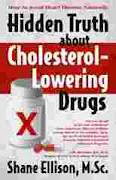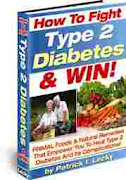Do you know that CORONARY HEART DISEASE is the most common type of heart disease in developed and industrialized countries? Have you heard that CHD is responsible for over half a million death in the United States and more than 150,000 death in the U.K. alone yearly? What is this Coronary Heart Disease all about anyway? Let’s get to know CHD and what causes it.
Coronary Heart Disease (CHD) is simply the disease of the coronary artery, a situation whereby the artery that supply blood to the heart is clogged or blocked, reducing blood flow to the heart muscles which need oxygen from the blood supply and this could lead to a complete artery blockage . When this happens in the heart, the result is heart attack medically known as myocardial infarction. The same process in blood vessels supplying the brain results in a stroke.
Coronary Heart Disease is caused mainly by:
-formation of plagues (fatty deposits) in the lining of the and,
-rupture of this plagues and a subsequent development of a blood clot known as thrombosis in the artery.
These plagues narrow the arteries so that less blood flows through them thereby depriving the heart muscles of the much needed oxygen. If blood supply is not restored, there will be a permanent damage to the heart.
Because of our western lifestyle especially in dieting, the health of arteries gradually deteriorates as we grow older. Fats and cholesterol is the major cloggier of the arteries. The fatty deposits (plagues) in the artery are medically called atheroma and the whole process is known as atherosclerosis.
The more the fatty deposits (plagues), the greater the risk of heart attacks. Women should beware because a woman's heart is smaller and has narrower coronary arteries than a man's, so it takes less plague to block them.
Plague rupture and thrombosis leads to a complete blockage of an artery. When these plagues break, it releases a complex chemical which triggers a lot of events leading to thrombosis.
The most common symptom of CHD is Angina Pectoris (chest pain). Angina occurs as a result of restriction of blood flow to the heart due to plague formation in the coronary arteries. The pain is described as a crushing or gripping pain across the chest which may also radiate into the teeth or throat and followed by sweating and breathlessness.
The pain arises from the muscle fiber of the heart that has insufficient supply of oxygen. The harder the heart muscles works, the more the oxygen will be required and the greater the imbalance between the oxygen supply and demand. This is why Angina is typically triggered by physical activities. It can also occur after stress and anxiety.
Heart attack (myocardial infarction) occurs when the degree of narrowing of the coronary is high or if there has been a blood clot (thrombosis) which blocks the arteries. It is important to know that heart attack can occur anytime, anywhere without warning. These are the warning symptoms of heart attack.
- Chest discomfort
- sweating
- Dizziness or nausea
- Fatigue, palpitation
- Fainting, breathlessness. Not all these symptoms occur in every attack
CHD and stroke are two most common form of cardiovascular disease. They account for about 75% of all the deaths relating to heart diseases.
To learn more about Coronary heart diseases Call 1-800-AHA-USA1 (1-800-242-8721) or visit http://www.americanheart.org
Knowledge is power, so Learn and Live!





0 comments
Post a Comment